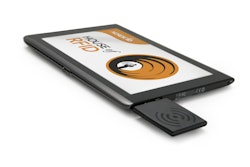Unfortunate as it may be, there is still a lot of ignorance and misinformation in the packaging community about sustainability and what it really means. Misconceptions abound, such as “It’s always more expensive,” “It’s only about renewable materials,” or “It’s just one characteristic of a package.”
And what are the guideposts? Is Walmart’s Sustainability Scorecard the gold standard anymore? That measurement system jumpstarted the industry, but now there are many life-cycle analysis (LCA) models, corporate scorecards, and non-profit guidelines.
One new publication, “Responsible Packaging by Design,” has ambitious goals to become a standard for the industry in the U.S. and internationally. RPbD for short, the document is a voluntary process standard laid out in eight thoroughly developed steps. The process guides any new packaging project, packaging update, or analysis of existing packaging. It is a living document that will be updated regularly to respond to shifts in the industry regarding materials and processes.
RPbD was developed by a core group of the International Safe Transit Association (ISTA) and is made available to ISTA corporate members free of charge at ISTA.org. (For non-members, there is an annual usage license fee of $750.) Larry Dull, President, Packaging Technology Associates Inc., led the two-year project that resulted in RPbD. He is also currently Vice President of Sustainable Solutions at ISTA.
“The word ‘responsible’ has a wider connotation,” explains Dull, when asked why “sustainable” or “sustainability” is not in the title. RPbD is also realistic, and the group understands that many companies do not have the resources to perform full life-cycle analyses (LCAs) of their packaging and operations.
RPbD lays out a plan for a full LCA with templates, forms, and examples that help users verify and document meaningful data. But it also allows for use of “LCA light” and “LCA thinking” variations. LCA light is a less-expensive LCA route that is aided by currently available software, and LCA thinking puts packaging projects under the microscope with pointed questions about the details of the packaging project.
Though it proposes no new performance metrics per se, RPbD is flexible enough to be used with any existing LCA program or scorecard requirement. “It’s a corporate decision as to how to prioritize according to existing metrics,” says Dull, stressing the importance of following up on packaging performance repeatedly and evaluating that against business goals.
One could say that RPbD even makes the business case for more sustainable package design, as well as the case for concurrent product and package design for the most efficient operations. “At the end of the day, you’re going to be saving a lot of time and energy,” says Dull.
Arnold Barlow, Senior Manager of Sustainability at UPS, appreciates the hole RPbD fills for packaging engineers. “It provides a good framework in how to consider sustainable principles right from the beginning,” he says. Considering the entire life cycle, Barlow explains, helps avoid unintended negative consequences from switching materials or formats.
From ISTA’s perspective, one of the most important sustainability goals is delivering products safely, and intact, to consumers. The waste of damaged, returned, or lost product can be the most unsustainable factor in the entire LCA.
“Protection is key,” says Jay Singh, Packaging Program Director at California Polytechnic State University. “You can’t romanticize sustainability.” Singh stresses how much sustainability goals should be about reducing the carbon footprint—and costs—of transportation in the LCA. Those costs skyrocket when damaged goods are returned to the manufacturer, and new goods have to be shipped. “The material in RPbD itself is not necessarily new,” he says. “What’s new is the approach.”
Barlow explains that there is no easy way to measure the over-packaging quotient in the sustainability question. If all the product arrives safe and undamaged, it’s impossible to say if that packaging system was the minimal amount to achieve that goal. That’s where testing comes in, and understanding the relationship between primary, secondary, protective, and distribution packaging.
Barlow sees the RPbD as a valuable tool because it offers deliverables in how to evaluate and test sustainability claims. A systems thinking approach helps engineers determine where to start the process, what to look at, and what level of sophistication to aim for. More important, RPbD’s sophistication in trying to line up with world-class standards is valuable when seeking verification or assurance from third-party testers that the results are substantial, pertinent, and meaningful.


























